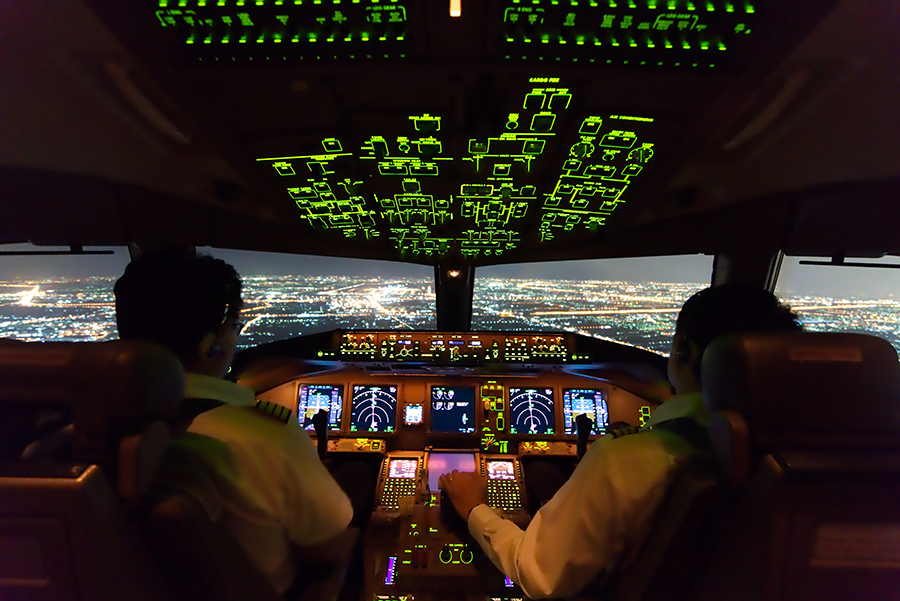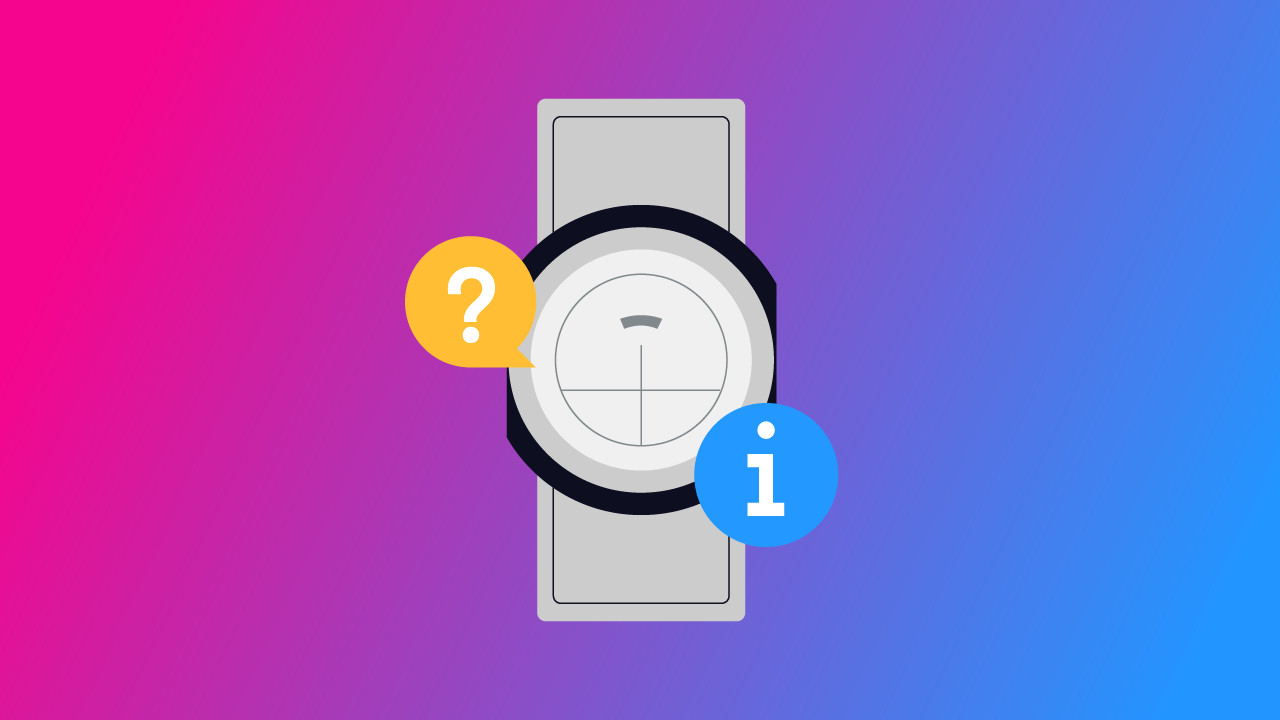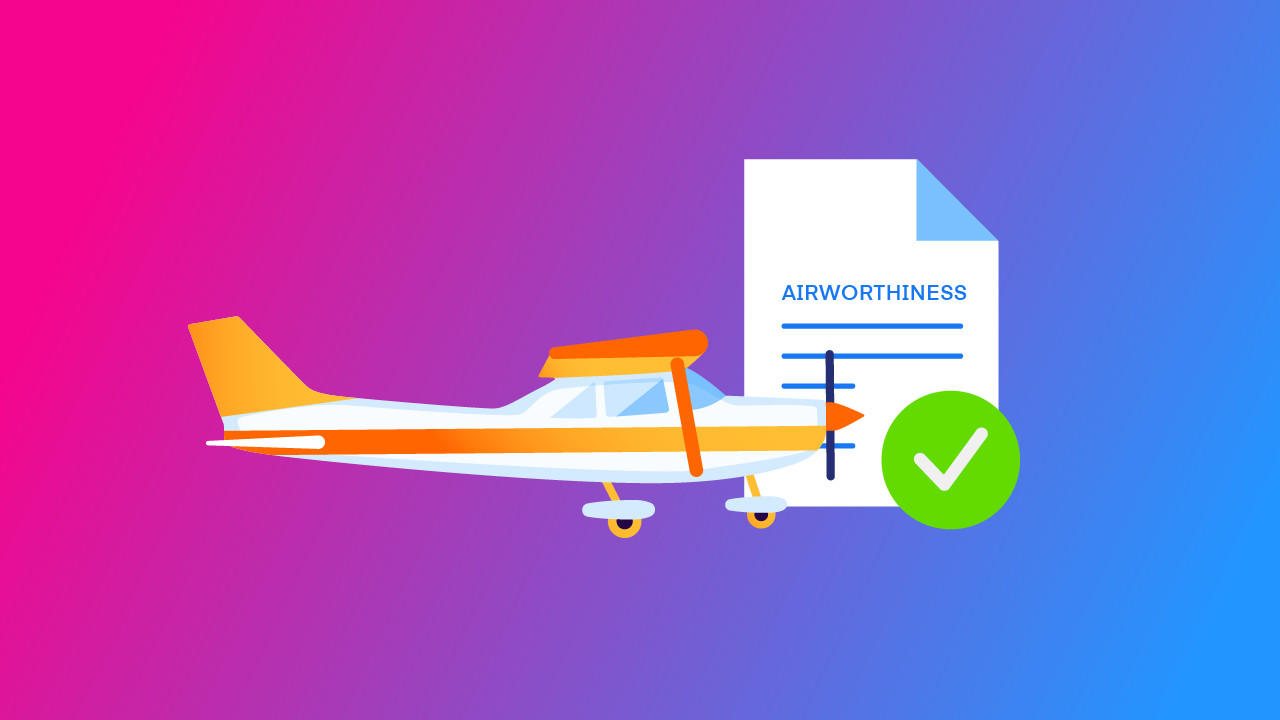-
How Do Pilots See at Night?
- Lateral Night Navigation
- Altitude Perception
- The Horizon
- Avoiding Weather
- Judging Speed
-
What Do Pilots See When Flying at Night?
- Other Aircraft
- Well-Lit Ground Features
- Airports
-
Do Pilots Wear Night Vision Goggles?
-
Can You Fly at Night Visually?
-
Is Flying at Night Scary?
- Smoother Air
- Quieter Airspace
- Easier Navigation
-
Great Views
-
Flying at Night - 4 Hazards to Be Aware of
- Visual Illusions
- Terrain
- Other Air Traffic!
- Engine Failure Considerations
-
Final Thoughts
If you’ve ever flown as a passenger and stared into the darkness, you may wonder how pilots see at night. Well, today, you are going to get all the answers. We will take a detailed look at night flying, how the pilots see, and even discuss some of the hazards if you find yourself airborne in darkness.
The truth is that pilots who fly at night will navigate using instruments instead of what they can see outside. This type of flying is conducted under instrument flight rules. Some ground features may be visible, but visual cues aren’t normally as reliable in the darkness as in the daytime.
Pilots use several techniques to ‘see’ and navigate at night without relying extensively on outside visual features.
Here’s what you need to know.
How Do Pilots See at Night?
The short answer?
With great difficulty! While it is possible to pick up a few ground features, pilots will generally prefer to navigate using their instruments to get around the sky in darkness. How do they achieve this?
Well, they use the following things within the cockpit to give them a great idea as to what is going on outside when it is dark: –
Lateral Night Navigation
While during the day, pilots may opt to use prominent ground-based landmarks to work out where they are, at night, this isn’t easily achievable. However, there are a few tools that the pilot can use to work out their position
VOR – “VOR” stands for ‘very high-frequency omnidirectional range’ (yes, we know, it’s a bit of a mouthful). This is a ground-based navigation aid that emits signals that can be picked up by a receiver on the aircraft.
This ‘beacon’ outputs 360 different lines or ‘radials’. All the pilot needs to do is lock onto a specific radial and follow it. The instrument will show whether the aircraft is to the left or right of the chosen radial.
When flying overland, it is common practice for aircraft to ‘hop’ from beacon to beacon until they reach their destination
NDB – “NDB” stands for ‘nondirectional beacon’. It’s a bit like a VOR, except it doesn’t have radials. Instead, it emits a circular, nondirectional beam (hence the name). The pilot will use an instrument called an “automatic direction finder” or simply “ADF” to interpret the signals. This simple instrument looks a little like a compass, but instead of pointing north, it will point towards the NDB.
Pilots can work out where they are if they know your position relative to something else, such as an NDB.GPS – Like with your car, many aircraft have inbuilt satellite receivers that allow the pilot to visualize their location on a moving map. While navigating solely by reference to this instrument isn’t recommended, it is a handy situational awareness tool that can give a great visual overview of the airplane’s location.
Altitude Perception
Flying at night isn’t just about where you are horizontal.
It’s vitally important that pilots ensure they have sufficient clearance from the ground too!
Luckily, a handy instrument will tell them precisely how high they are above sea level. As long as they know how high the surrounding terrain is above sea level, they can work out their height above this terrain.
The Horizon
Whether flying at night or during the day, pilots need to see some kind of horizon. They use this to determine the airplane’s attitude. At night pilots will turn their gaze from outside to inside and use the artificial horizon.
The artificial horizon is normally a simply globe split into two hemispheres. Using this instrument, the pilot can determine whether the aircraft is in a climb, a dive, or rolling.
Avoiding Weather
One thing that might be readily apparent during the day, but not so obvious at night, is bad weather. While thunderstorms can be quite visible when they are flashing and banging, they don’t display either of these characteristics during certain stages.
In the case of commercial aircraft, pilots will utilize a weather radar. Information regarding thunderclouds will be displayed on their navigational displays. They will do their utmost to fly around the most obvious areas of danger.
Judging Speed
Pilots need to keep a close eye on their speed. It can be really difficult to gauge how fast the aircraft is flying with reference to the ground at night.
To counter this, pilots will make constant reference to an airspeed indicator. This instrument uses air pressure to gauge how fast the aircraft is flying.
You can read more about air pressure instruments here
What Do Pilots See When Flying at Night?
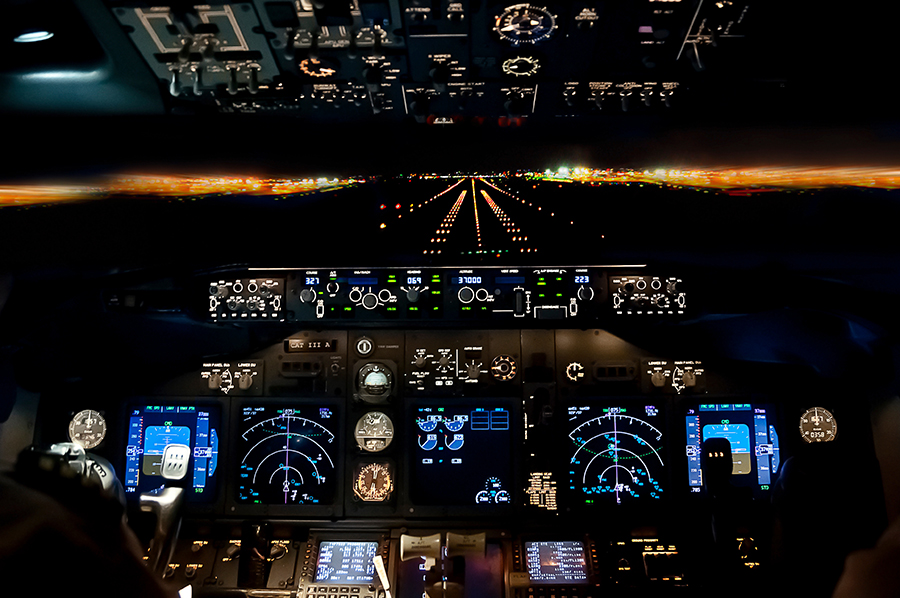
The true answer is that pilots don’t see much when flying at night. For the human eye to perceive things, it needs light and something for that light to reflect off. Obviously, the one thing pilots don’t want to see is something in front of them.
The aircraft lights aren’t actually much use either. With a short-range and wide beam, they aren’t generally used until the aircraft is very close to the ground.
All that said, some things are actually easier to see at night. Such as the following: –
Other Aircraft
A sky is a big place, and during daylight hours, aircraft can be difficult to spot. When viewed from below, they can blend in with the bright sky. When viewed from above, they can merge with the terrain beneath.
However.
At night time, it is a different story.
Aircraft lights, especially those that ‘blink’ or flash, are easy to spot.
Want to know what the different aircraft lights mean? You might want to check out our article here.
Well-Lit Ground Features
During the day, roads, towns, and sometimes even cities can be difficult to pick out. Once the sun sets, these areas can become the only prominent things pilots can see on the ground.
Dense, urban areas are easy to see at night, especially from higher altitudes. Road lighting on main highways is also a prominent feature.
Airports
Airports are usually located in or near big cities and towns by their very nature. Often, they can blend in with the surrounding infrastructure and be difficult to see.
At night time airports are usually pretty easy to spot. Many airports have extremely well-lit runways and apron areas. The approach lighting system is custom made to make it easy to navigate toward the runway centerline in the dark too!
Do Pilots Wear Night Vision Goggles?
It is not normally the case that pilots wear night-vision goggles. Civilian transport is well equipped enough to not warrant the use of NVGs. Most pilots will use onboard instruments and navigation aids to make their way around the sky at night.
However, there are a few exceptions.
You may very well find the following pilots use night vision goggles: –
- Military pilots
- Search and rescue pilots
- Emergency service pilots
Can You Fly at Night Visually?
It is possible to fly at night visually. In fact, to gain a night rating or qualification, you may find that it is a requirement that you have to fly at night. However, it is important to note that you must not fly at night if you are not qualified to do so.
If you want to read more about what counts as ‘night flying’, here’s a great article.
Is Flying at Night Scary?
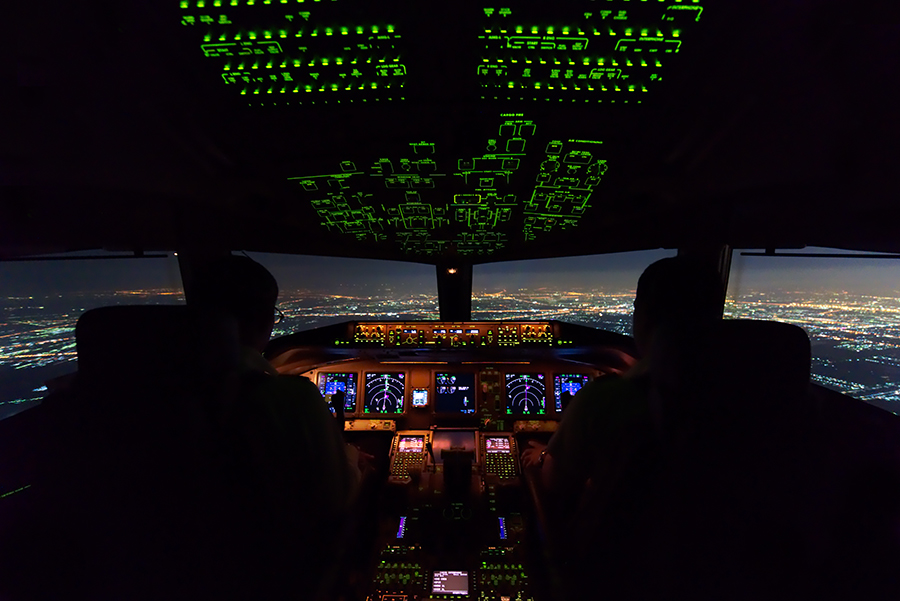
Flying at night isn’t scary, but it does require you to be aware of a few things that aren’t quite as problematic during the day. Flying at night can be an immensely rewarding and magical experience. Here are some of the benefits that you could enjoy…
Smoother Air
During the day, the sun heats the earth and creates ‘thermals’. Thermals are convective air currents caused by different earth surfaces heating irregularly.
And.
Thermals mean one thing…
Turbulence.
While it isn’t always the case, air tends to cool and sink once the sun goes down. This produces super-smooth flying conditions.
Quieter Airspace
Go to any general aviation airfield at the weekend, and you’ll find it buzzing with activity. However, at night it is a different story. As a general rule, the skies are quieter at night. If you are flying at night, it is more than likely that you’ll have the air to yourself!
Easier Navigation
Navigating at night can actually be much easier than during the day. Large conurbations and their associated street lights can be seen from miles away. Making it easy to pinpoint them and fly towards them.
Roads are also much easier to pick out against the surrounding terrain.
Both of the above will allow you to navigate with ease.
Great Views
You don’t have to go long distances to appreciate flying at night. Many pilots choose to relish the opportunity to get aloft in darkness and stay in the circuit. You’ll get all of the above benefits and be able to view your home airfield in a different light (pun intended).
Flying at Night – 4 Hazards to Be Aware of
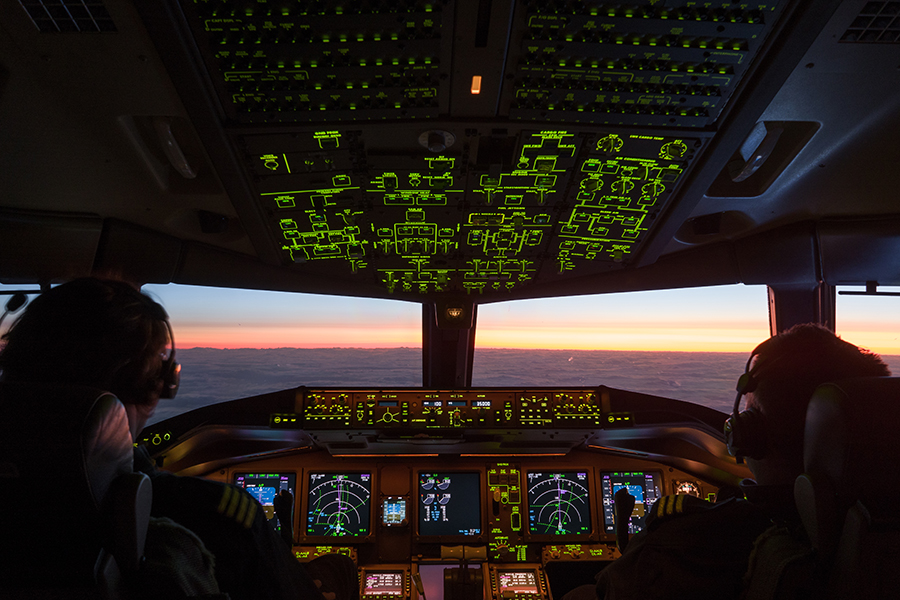
Flying at night comes with its own brand of hazards, which are very different from during the day. Here are some things to be cautious off when getting airborne in the dark…
Visual Illusions
The human eye is much better suited to daylight conditions and is somewhat limited at night. Visual illusions can cause confusion and disorientation. The most common nighttime illusions in aviation include: –
‘Black Hole Effect’
This is one to watch out for when making approaches to remote airfields. It can be difficult to judge altitude with no visual references aside from runway lights. Big airports have precision approach path indicators for entirely this reason.
The lack of visual cues can lead pilots to lose any sense of depth perception. There is often the temptation to ‘duck under’ the correct approach path, making the airplane lower than it should be.
Distance
Judging distance at night is very tricky. The human brain normally ‘fills in the gaps and uses the surrounding topography between two points to gauge distance. This might not be visible at night, making it hard to tell how far the airplane is from a feature.
Autokinesis
Have you ever sat on a train stopped at a station, and the train next to you moved? Did you briefly feel like you were moving? This principle is exactly the same with autokinesis.
Moving lights at night can ‘trick’ your brain into thinking motion exists where there is none. Sometimes the lights themselves don’t have to move! There have been reports of pilots taking evasive action to avoid stars. In fact, it was the aircraft’s rolling giving the impression of an airborne collision risk.
Moving vehicles on the highway and even moonlight on waves by coastal airfields can create disorienting sensations while flying.
False Horizons
Remember how we talked about the pilot using the artificial horizon to work out the airplane’s attitude?
To fly on instruments, you have to sometimes ignore what your brain is telling you if you peek at the outside world. During darkness, many different phenomena are more apparent that give the impression of the ‘horizon’.
If a false horizon is used by the pilot as a point of reference, this can be a flight safety issue.
Terrain
You see that big radio mast over there?
Well, you might not at night time. You can’t always rely on obstacles and high points being lit by anti-collision lights.
So how do pilots see at night, and how do they avoid terrain?
Easy, it’s three words…
Also referred to as MSA… In a nutshell, pilots will review their route and carefully note the highest terrain along with it before adding a ‘fudge factor (usually 500 – 1000 ft). They can fly safely at night because there is zero risk of hitting an obstacle or terrain if they stay above this altitude.
Other Air Traffic!
Flying under visual flight rules means that you must “see and be seen”. This doesn’t change when you are flying at night. While generally, it is easier to spot other well-lit aircraft in darkness, it is still worth having your wits about you.
Engine Failure Considerations
This is a big one. While engines don’t often fail on aircraft, the chance of a successful outcome is somewhat reduced when flying at night. During the day, it is often possible to ‘pick a field’, whereas easily visible fields may be hard to come by at night.
Don’t fly over areas you know to be poor landing sites, especially at night! Plan your route to include easy-to-reach diversion airfields and absolutely avoid flying over inhospitable terrain.
Final Thoughts
Because of reduced visual cues outside the aircraft, most pilots will opt to fly under instrument flight rules, relying on the internal instruments of the aircraft to help them navigate the skies in darkness. Visual flight is possible but is challenging in comparison to its daytime counterpart.
Want to know more about navigating on instruments? We have expert-led courses that teach you everything you need to know, all in the comfort of your own home.
